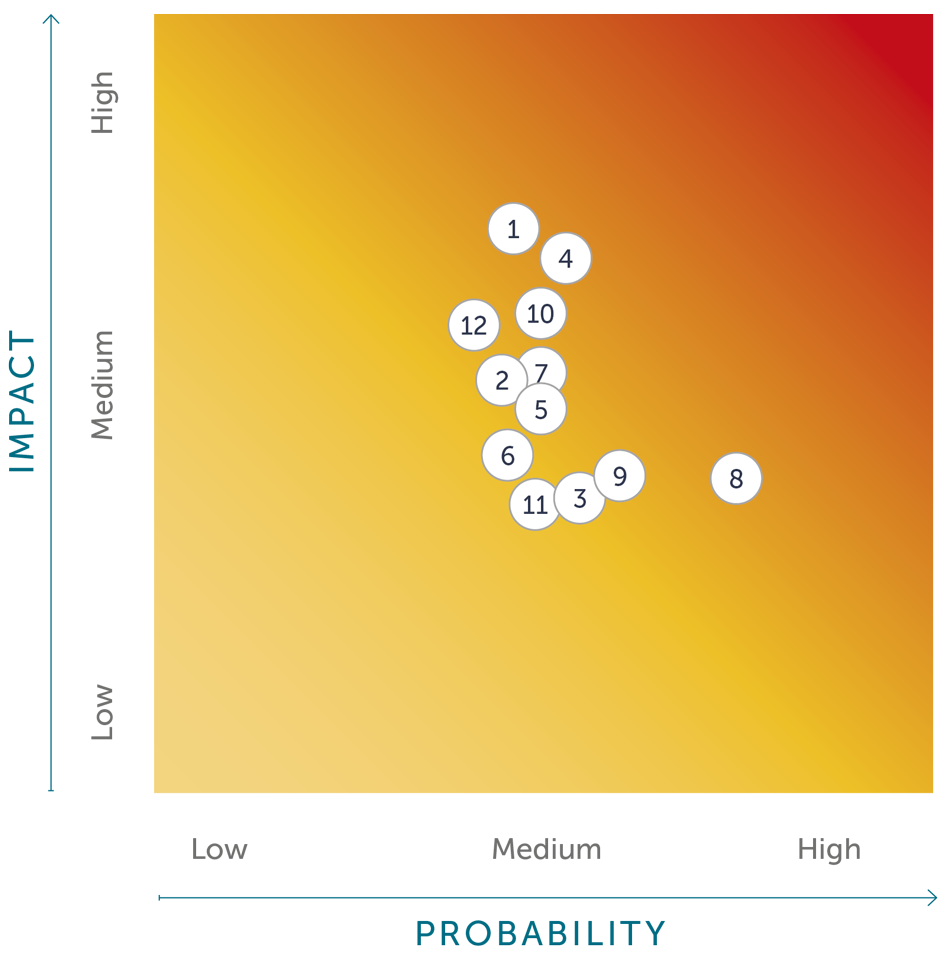3-3, IF-RE-410a-3
Human rights
In 2023, we engaged an independent consultant to work with us on a diagnosis of our exposure to the risk of human rights violations in the operations and activities that take place in our properties, to identify areas of opportunity and actions to prevent, eradicate or mitigate any conduct that threatens human rights.
Goals of the analysis
- Discover the main factors that pose a risk to the human rights of our main stakeholders (employees, suppliers, tenants and visitors).
- Create strategies to avoid human rights violations in sensitive issues that affect our value chain.
There were two stages to the analysis:
STAGE 1 / Diagnostic
The diagnostic consisted of a review of public information from Fibra Danhos, as well as the laws and regulations governing businesses and human rights, in Mexico and the rest of the world; additional information to verify the status of our due diligence process; determining the level of maturity of this process, and which human rights are commonly violated in Mexico and in the real estate industry.
STAGE 2 / Field work
In the field study, a sample of 14 of our properties was selected for investigating possible human rights violations. The measurement instrument was designed and the field study carried out; subsequently, a risk analysis was conducted with emphasis on human rights and, finally, based on the results, a risk matrix was constructed with recommendations to improve the human rights due diligence process.

Torre Virreyes
3-3
Human rights risk matrix
The human rights risk analysis took place in parallel to the 2023 materiality analysis. Based on the identification and evaluation of risks, potentially material issues were cross-checked against the human rights issues identified in the diagnosis. This resulted in a human rights severity assessment can be analyzed in a risk matrix or heat map.
Impact prevention and remediation
Based on the findings, we are developing several cross-departmental programs that will initially mitigate and/or control the main risks related to human rights such as environment, life with dignity, child protection and cultural life. Over time we intend to develop programs for addressing all the potential human rights impacts identified in the study. Although Fibra Danhos is not directly responsible for most of these possible violations, which are located in our value chain, we believe it is our responsibility to foster respect for human rights and avoid any reputational or indirect impact from such matters.
In addition to the strategy of cross-departmental programs for the entire organization, a risk map and an action plan were also developed for each property: although they share similar problems, each property has different characteristics and problems.
The first step in these strategies is to introduce a training plan for all Fibra Danhos employees, key suppliers and tenants. This program includes a series of training sessions on topics ranging from value chain impact on human rights to guaranteeing a safe infrastructure for the enjoyment of human rights, as well as zero-tolerance stance on sexual harassment, discrimination or other forms of violence. These will take place throughout 2024 and will become an integral part of our ongoing training program.

Reforma 222


| NUMBER | HUMAN RIGHT | LEVEL OF EXPOSURE |
|---|---|---|
| 4 | Environment | 5.87 |
| 1 | Life with dignity | 5.42 |
| 10 | Child protection | 4.90 |
| 8 | Cultural life and the benefits of scientific advances | 4.77 |
| 7 | Abolition of child labor | 4.23 |
| 12 | Property | 3.95 |
| 5 | Work | 3.91 |
| 2 | Personal safety (physical and psychological), health | 3.84 |
| 9 | Freedom of movement | 3.82 |
| 3 | Equality and nondiscrimination | 3.25 |
| 6 | Fair and positive working conditions | 3.14 |
| 11 | Dignified housing | 2.91 |